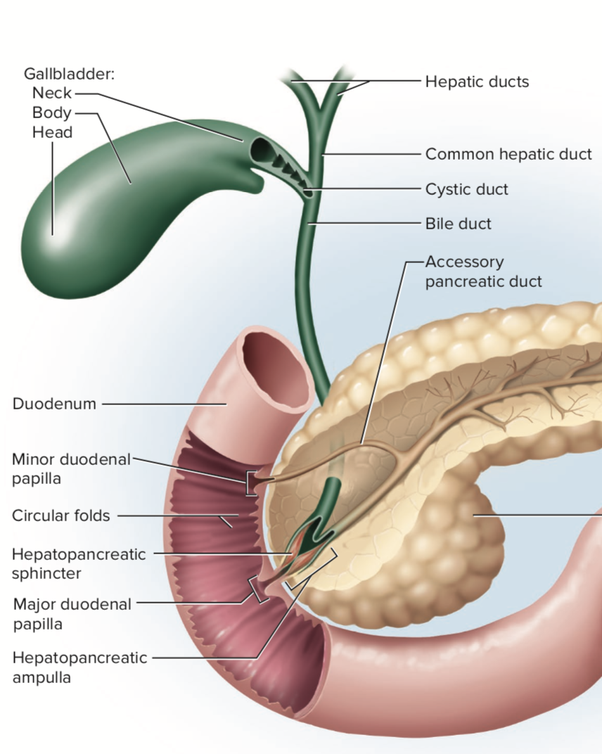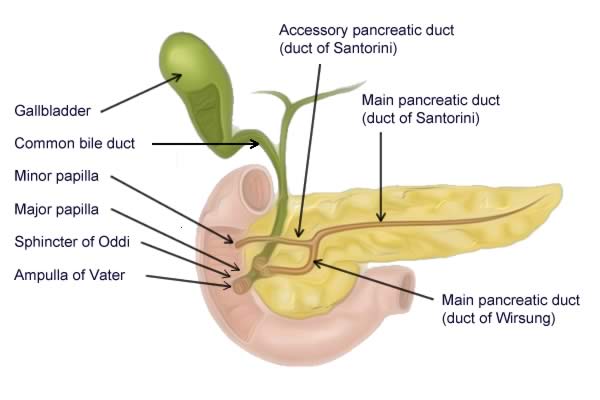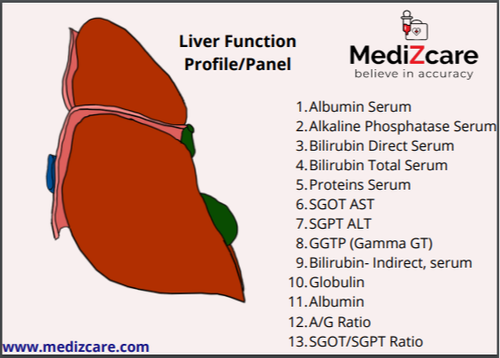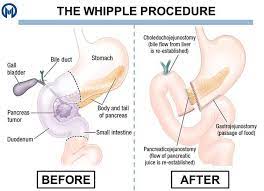The ampulla of Vater is one of the various organs in the human body which plays an important role in acting as a passage for the secretions. Ampulla of Vater is a small opening that is present at the beginning of the small intestine.
It is a point where the bile and pancreatic ducts release the secretions into the small intestine. Ampulla of Vater can also be referred to as hepatopancreatic ampulla or hepatopancreatic duct. It is situated in the major duodenal papilla present in the duodenum.
The major duodenal papilla consists of pancreatic duct opening, which ends in the duodenum. It is situated in the second part of the duodenum at a distance of 7 to 10 cm from the pylorus. The sphincter of Oddi is a section made of the muscles situated in the section of digestion organs. It helps in the movement of the juices from the pancreas to the duodenum.
The sphincter of Oddi is different from the ampulla of Vater. The sphincter of Oddi is neighboured by the ampulla of Vater. It is in a mucosal fold. It sends substances from the pancreatic and bile duct. There is also a minor duodenal papilla. It is only present in cats. Cats stick with the accessory of pancreatic ducts. The major duodenal papilla receives the bile duct.
The meaning of the word ampulla comes from the Latin word flask. The ampulla flask was used by ancient Romans to store ointments, perfume, and wine. It also refers to a sac-like enlargement of a canal or duct in the living being. There is also another organ which is also known as the ampulla of ductus deferens. It is present only in the male reproductive system. The main function of the ampulla is to act as storage chambers for semen and contributes to the secretion of semen through ejaculation. It is thinner than the rest of the sperm canal. The thinness varies with different living species.
The term, “Ampulla of Vater” was named after the German anatomist Abraham Vater (1648-1751). He published a description of it in the year 1720.

Functions of the ampulla of Vater:
The ampulla of Vater regulates the flow of bile and pancreatic juice through the ampulla. The sphincter of Oddi controls the movement of bile and pancreatic juices to the duodenum.

The bile juice produced in the gall bladder consists of salts that are broken down into smaller units. The pancreatic juice consists of bicarbonate. It prevents the entry of unwanted substances from the duodenum into the ampulla.
Ampullary or Ampulla of Vater cancer:
The main cause of ampullary cancer is a result of the mutation of the cells in the DNA. The cells disobey the DNA. There is a usual process of rebirth of cells but the old cells do not undergo death. There is an increase in the number of cells present in the ampulla of Vater. It results in the production of cancer. Cancer has begun in the cells of the ampulla of Vater.

Ampullary cancer occurs in an individual very seldom. People who have a gastronomical tract in the ampulla of the Vater have one percent a chance of getting this type of cancer. There is also another type of cancer known as periampullary cancer. It is far more dangerous than ampullary cancer. The causes of ampullary cancer in the ampulla of Vater are not known and cannot be categorized into a list of reasons. However medical practitioners advise a set of people about the possibility of getting ampulla of Vater cancer or ampullary cancer.
The cancer is most commonly seen in men above the age of seventy. These men also have the possibility of getting ampulla of Vater cancer. It is also more common in males than in the opposite sex. The ampulla of Vater cancer or ampullary cancer is also connected with the inheritance of defected genes that one receives from the past generation. People who have Lynch syndrome, familial adenomatous polyposis have the possibility of getting this kind of symptoms.
A person who has the habit of smoking is at a higher risk for this disease. An individual with diabetes mellitus also has a risk for cancer.
Symptoms of the ampulla of Vater cancer:
The symptoms of ampullary cancer/ampulla of Vater is different in each person. If there is a continuous recurring of these symptoms one has to go for a checkup. The symptoms of the ampulla of Vater cancer are as follows:
- Jaundice: The elements from the bile do not pass through the ampulla of Vater. It is observed in the bloodstream. It makes the skin look pale in color and eyes yellow in color.
- Pruritus and skin itchiness about Jaundice.
- Abdominal pain (pain in the stomach region) and back pain.
- fever.
- Bleeding from the rectum.
- Anemia.
- Loss of appetite.
- Nausea and vomiting.
- Weight loss.
- Pancreatitis (Inflammation of the pancreas).
- Diarrhea.
- clay-colored and greasy stools.
If an individual also has severe chest pain, shortness of breath, and is unable to get out of bed for more than twenty hours they have to immediately consult a doctor.
Also read:
Ampulla of Vater cancer stages:
The ampulla of Vater cancer is situated in a person’s body based on the following criteria. They are:
- The location of cancer.
- Where the cancer is spreading.
- Which are the organs affected by cancer.
The cancer is classified into various stages based on its spreading phase. There are four stages for the ampulla of Vater cancer. They are:
- Stage 0: Cancer has not yet begun to spread. But there might be symptoms in the person’s body.
- Stage 1: Cancer has begun to spread in the inner layer of the small intestine. It has not spread to the Sphincter of Oddi.
- Stage 2: Cancer has moved on to spread in the middle layer of the small intestine. There is a possibility of cancer spreading to the sphincter of Oddi.
- Stage 3: Cancer has spread to the outer walls of the small intestine.
- Stage 4: Cancer has moved to spread from the small intestine to the other organs and lymph nodes.
Ampullar of Vater cancer grades:
The ampulla of Vater cancer grades acts like a marker to show the appearance of the tumor in a microscope. The grades are classified into four types they are grade 1, grade 2, grade 3, and grade 4.
The lower grades such as grade one and two make the tumor appear like a normal cell under a microscopic representation. In this grade, the cancer cells are less likely to spread to the other organs. In the higher grades such as three and four, the cancer is more likely to spread to the other organs. The cancer cells act abnormally and one can predict its movement. The patient needs to know about the stage and grade of the ampulla of Vater cancer to take the treatments accordingly.
To know the questions that a patient should ask the doctor about the ampulla of Vater cancer, click on the link given below:
Diagnosis of ampullar of Vater cancer :
The diagnosis of ampullary cancer or ampulla of Vater cancer can be done through an endoscope. An endoscope is a small camera that is sent into your body through your throat, stomach, or mouth. The camera projects endoscopic images on the screen which helps the doctor to diagnose the patient. The endoscopy ultrasound sonography can identify the size of the tumor which is with the range of 1cm. It also helps in the identification of gall stones in the gall bladder.
The hemoglobin test is also useful to detect ampullary cancer. The individual who has bleeding from the rectum will have a lesser amount of hemoglobin levels. It willpave the way forr detecting a particular disease. The urinary test will help the doctor to know whether the patient has jaundice which is one of the symptoms of cancer. The liver function test consists of testing serum bilirubin amylase, alkaline phosphatase, aminotransferase levels. The change in these levels can also result in ampullary cancer/ampullar of Vater cancer.

There is also another method known as endoscopy retrograde cholangiopancreatography. In this method, the doctor uses an injection to inject a dye into the digestive region to know the blockages present in the stomach. The doctors can also collect samples from the stomach regions and send them to the lab for diagnosing whether the person has ampullary cancer/ ampullar of Vater cancer.
The magnetic resonance cholangiopancreatography is abbreviated as MCRP. It uses the magnetic field to diagnose the liver, stomach kidney, and other digestive organs to analyze and check the function of the gall bladder on the screen. If a patient has any other medical issues, they should inform the doctor before undergoing any of the analyses mentioned above.
The CT scans also show the affected regions in the ampulla of Vater. The CT scan of the chest helps to detect whether the ampulla of Vater cancer has spread to the lungs.
Surgeries for ampulla of Vater cancer:
The people affected by ampulla of Vater or ampullary cancer can undergo Whipple procedure. The Whipple procedure is also known as a pancreaticoduodenectomy. It consists of the removal of the part affected by ampullary cancer or ampulla of Vater cancer. The affected parts such as head part of your pancreas, part of the small intestine, gall bladder, and part of the bile section.

The Whipple procedure is done through an endoscope which leaves two to three holes in the stomach region. It is otherwise known as minimally invasive surgery. The other type of surgery consists of a single incision through which a doctor operates on an individual manually.
The patient can also be operated on through chemotherapy, radiotherapy, and a combination of both. The survival possibility of ampullary cancer/ampulla of Vater cancer has the possibility ranging from 5% to 75%. The survivor can live up to five years after the surgery.
Manage ampulla of vater cancer:
There are no preventive measures for ampullary cancer/ampulla of Vater cancer. But one can learn to cope with the ampulla of Vater cancer. The various suggestions for balancing ampullary cancer/ampulla of Vater cancer are as follows:
- The person should learn to weigh the rest and the task.
- The person should plan important activities when the energy levels are high.
- The individual should a strict no to smoking and alcohol.
- The individual should have a balanced diet which consists of meat, fish, eggs, cheese, fruit, and nut.
- The individual should drink 8 to 10 glasses of water every day.
Hospitals for ampulla of Vater cancer:
The patient affected by ampulla of Vater cancer should also get medical support along with emotional support from family members and friends. There are some of the hospitals which will help the patient and support them in the journey. If you click on them, you will get to know the contact details. They are:
The official websites of these hospitals also have video conferencing facilities, appointment details that will help the patient.
The patient should not lose hope when contracted with cancer. One can overcome it with some precautions. Early diagnosis of the ampulla of Vater cancer can help the patient to escape from its dangers. So a person should have a healthy lifestyle which consists of eating healthy food, good physical exercise and a good amount of sleep.
Frequently Asked Questions:


Leave a Comment